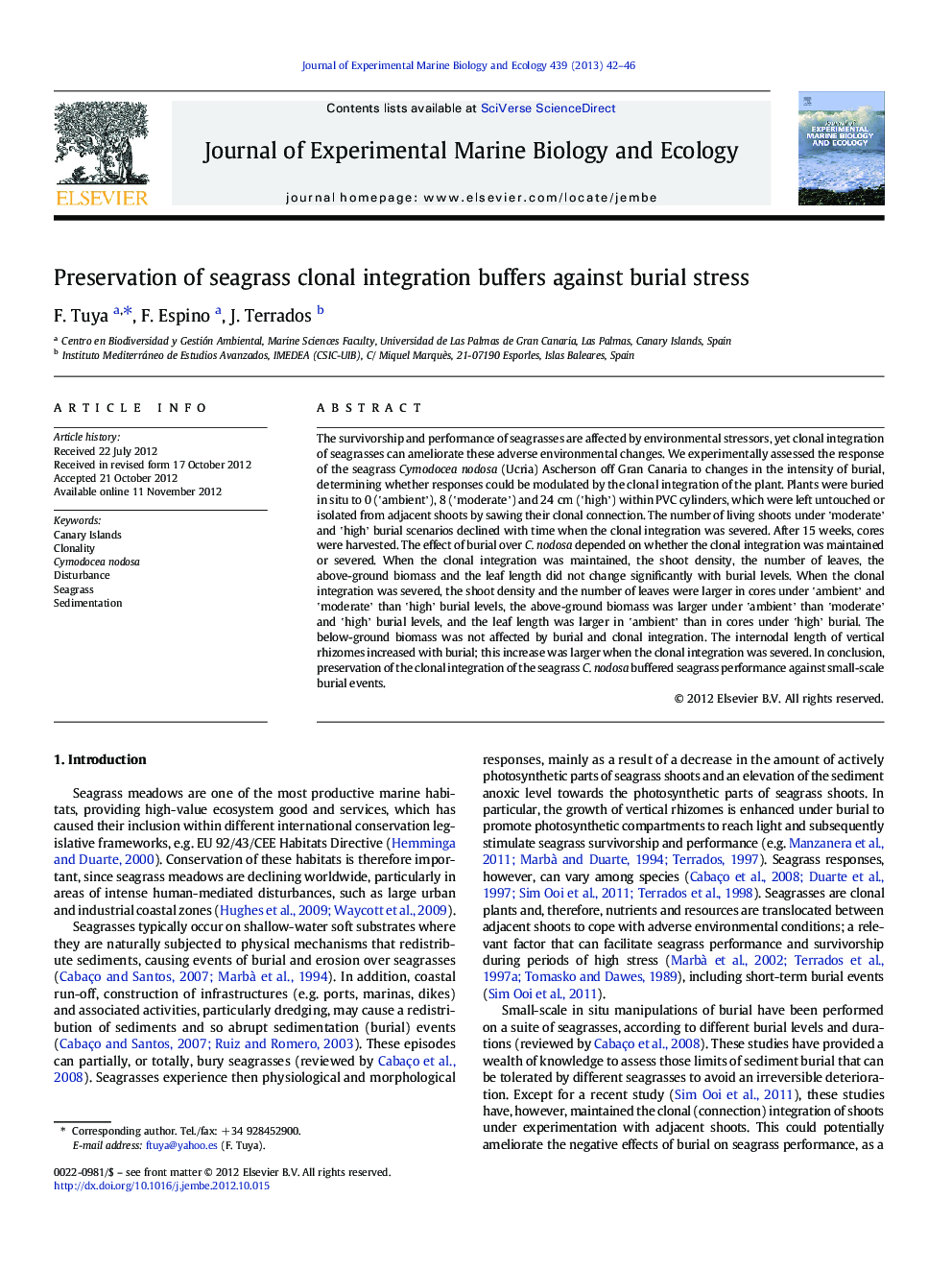| Article ID | Journal | Published Year | Pages | File Type |
|---|---|---|---|---|
| 4395877 | Journal of Experimental Marine Biology and Ecology | 2013 | 5 Pages |
The survivorship and performance of seagrasses are affected by environmental stressors, yet clonal integration of seagrasses can ameliorate these adverse environmental changes. We experimentally assessed the response of the seagrass Cymodocea nodosa (Ucria) Ascherson off Gran Canaria to changes in the intensity of burial, determining whether responses could be modulated by the clonal integration of the plant. Plants were buried in situ to 0 (‛ambient’), 8 (‛moderate’) and 24 cm (‛high’) within PVC cylinders, which were left untouched or isolated from adjacent shoots by sawing their clonal connection. The number of living shoots under ‛moderate’ and ‛high’ burial scenarios declined with time when the clonal integration was severed. After 15 weeks, cores were harvested. The effect of burial over C. nodosa depended on whether the clonal integration was maintained or severed. When the clonal integration was maintained, the shoot density, the number of leaves, the above-ground biomass and the leaf length did not change significantly with burial levels. When the clonal integration was severed, the shoot density and the number of leaves were larger in cores under ‛ambient’ and ‛moderate’ than ‛high’ burial levels, the above-ground biomass was larger under ‛ambient’ than ‛moderate’ and ‛high’ burial levels, and the leaf length was larger in ‛ambient’ than in cores under ‛high’ burial. The below-ground biomass was not affected by burial and clonal integration. The internodal length of vertical rhizomes increased with burial; this increase was larger when the clonal integration was severed. In conclusion, preservation of the clonal integration of the seagrass C. nodosa buffered seagrass performance against small-scale burial events.
► Seagrass performance is affected by burial. ► Preservation of the clonal integration of C. nodosa buffered against burial stress. ► Clonal integration may allow seagrasses to maintain function under stressful events.
